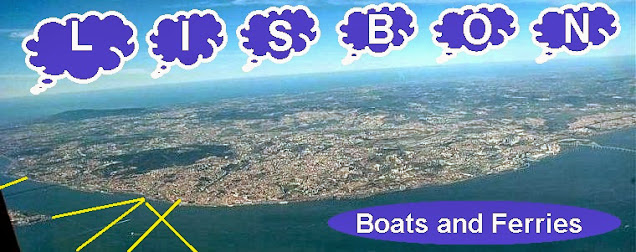When you arrive in Lisbon - First information you need to know.
CP TRAINS + FERTAGUS TRAINS + METRO + BOATS
TRAINS
CP TRAINS
You must fill in the spaces reserved for the train station of origin and destination and you must also include a date. At Lisbon train stations spaces or other you must fill in it: Lisboa - Oriente; Lisboa - Santa Apolonia; Lisboa - Rossio; Lisboa - Entrecampos; Lisboa - Sete Rios; Lisboa - Cais do Sodre; Alcantara-Terra; Alcantara-Mar; Roma - Areeiro; Cascais; Evora; Setubal; Porto - Campanha; Porto - Sao Bento
FERTAGUS TRAINS
LISBON AIRPORT
METRO
LISBON METRO + TRAINS + BOATS NETWORK
BUS
BOATS
"SETE RIOS" BUS TERMINAL
REDE EXPRESSOS
"PRAÇA DE ESPANHA" BUS TERMINAL
BUS TO SOUTH OF TAGUS RIVER
TST
https://www.tsuldotejo.pt/?idioma=2




DANGER. Pickpockets are already operating inside the airports, when you are relaxed or sleeping. They are mostly young girls, disguised as tourists, like those you will see in this publication. They're part of the Rom mafia. They are moved between tourist cities. After being detained and always released, several times, they are sent to other tourist destinations.

For me, because I have visited almost all of Europe, Lisbon is among the three most beautiful cities (the monumental area of Belém is, perhaps, the most beautiful and complete worldwide - Jeronimos Monastery, in which are situated the Museum of Marine and the Archaeological Museum, the Tropical Botanical Garden, right next to the monastery and before the pasteis de Belém, Belém Tower and the Monument to the Discoveries, the coachmuseum and, 800 meters above, following the Calçada da Ajuda, the Ajuda Botanical Garden, and the Ajuda Palace.)
You can find several bakeries to buy "pasteis de Belém", in the street that goes to the "Museu dos Coches".
Pasteis de Belém and at the stop of the tram 15 - PICKPOCKETS ( VERY DANGEROUS ZONE)
💢💢💢💢💢
TRANSPORTATION IN LISBON
The first initiative to be taken, on arrival in Lisbon, is to buy the “Viva Viagem” card or the “7 Colinas” card. It costs 0.50 € and can be charged with a type of transport title known as ZAPPING, valid on metro, buses, trams, funiculars, and Santa Justa Lift, trains, and ferries.
A taxi between Lisbon airport and the city center costs, a maximum of 15 euros, considering a surcharge of luggage. Taxi drivers are known, for decades, to deceive the tourists. Try to pay with banknotes of low value or try to pay the exact amount. And beware of pickpockets. They will be waiting for you, when you're still at the airport. Never put your backpack or suitcase beside you, anywhere. Including restaurants and even in the living room of your hotel. There are pickpockets disguised as tourists. It is so everywhere. I myself have been a victim in Paris and Bratislava. In Belgium, the Netherlands, and Germany there have been people who have tried to deceive me with the money change I was given back . Be very careful with the exchange. In Amsterdam, I gave a bill note of 100 Swiss Francs, to a man, who was working on a house exchange, and he gave me back the change corresponding to a bill of 10 francs.
WARNINGS
A taxi between Lisbon airport and the city center costs, a maximum of 15 euros, considering a surcharge of luggage. Taxi drivers are known, for decades, to deceive the tourists. Try to pay with banknotes of low value or try to pay the exact amount. And beware of pickpockets. They will be waiting for you, when you're still at the airport. Never put your backpack or suitcase beside you, anywhere. Including restaurants and even in the living room of your hotel. There are pickpockets disguised as tourists. It is so everywhere. I myself have been a victim in Paris and Bratislava. In Belgium, the Netherlands, and Germany there have been people who have tried to deceive me with the money change I was given back . Be very careful with the exchange. In Amsterdam, I gave a bill note of 100 Swiss Francs, to a man, who was working on a house exchange, and he gave me back the change corresponding to a bill of 10 francs.
SUPPORT CARDS:
What is ZAPPING ?
Zapping consists of charging money onto a “7 Colinas” or “ Viva Viagem” cards, which is deducted as the customer validates the cards on different transports, according to the prices in each operator. This solution was designed for customers who are not regular users but often use one or more Public Transport Operators.
This title offers a discount for multimodal use, valid for trips that include two operators and taken on a predefined period of time. This bimodal discount is calculated based on 5% of the total cost of the trips and is automatically applied to the last validation. You may charge your card at any Carris, Metro, CP, and Transtejo/Soflusa point of sale.

LISBON - ZAPPING
Advantages of using zapping:
This title offers a discount for multimodal use, valid for trips that include two operators and taken on a predefined period of time. This bimodal discount is calculated based on 5% of the total cost of the trips and is automatically applied to the last validation. You may charge your card at any Carris, Metro, CP, and Transtejo/Soflusa point of sale.

LISBON - ZAPPING
Advantages of using zapping:
Cost of 1 train journey ( valid 3 hours):
Lisbon (Cais do Sodré) - Oeiras- Cascais € 1,90
Lisbon (Rossio) - Queluz (Palace) - Sintra € 1,90
- Cost of 1 BUS journey € 1,47
- Cost of 1 METRO journey € 1,47
- Cost of 1 boat journey to Cacilhas € 1,40
- Cost of 1 Funicular and Santa Justa Lift journey € 1,47
- Cost of 1 Tram ( nº 28, nº 15, nº 12; nº 18, 24 & nº25) journey € 1,47
You do not waste time in queues to buy tickets. You will not have trouble being misunderstood. You will not buy, for language difficulties or no comprehension, instruction, a wrong fare ticket . Change from one transport to another with a simple gesture of validation
The main advantage - Avoid pickpockets
Pickpockets operating in Lisbon.
Dear tourist. If you have ever been robbed in Lisbon, re-visit this city and do justice to these criminals. These useless, living the misery of others, are easy to find. Dear tourist. Portugal is under the bailout. With the money paid by your taxes, these criminals receive subsidies. And the rascals who dominate politics and justice are also paid with the taxes you pay. So, dear tourists, requiring protection.
Lisbon is considered the ninth safest city in the world. However, due to corruption and an unworthy justice system, there are criminals, like pickpockets, acting with great comfort. An incredible fact: if a pickpocket is seen by a group of Portuguese, assaulting a tourist, no one will react.

FAMOUS PICKPOCKETS:IT´S EASY TO FIND THEM. AMAZING
NEXT PICTURES: A GROUP OF PICKPOCKETS ROM, DISGUISED AS TOURISTS, STEAL A COUPLE OF JAPANESE. LISBON - SANTA JUSTA LIFT
UNBELIEVABLE.
You will be the next one. The 2 backpacks of a couple of tourists are being opened, in turn, by two pickpockets, in the main avenue of Lisbon. Both the husband and his wife were robbed of the wallets with their money and their respective document
A VERY, VERY FAMOUS PICKPOCKETS:
A group of pickpockets ROM, the biggest mafia in Europe, assaulting the backpack of a French tourist. They disguise themselves as tourists, using maps to hide the theft.
When you are visiting a city much sought by tourists from around the world, such as Lisbon, you should take special care, to avoid the real danger of falling victim to theft by pickpockets. At the entrance and exit of the Metro and inside buses and streetcars (the trams 12, 15, and 28 and the bus 737 are authentic havens for pickpockets) put your suitcase or your backpack in front of you. With one hand protect them. You should not bring your documents and credit or debit cards. Bring only in your pockets, banknotes, and coins. In another pocket bring with you, your card "VIVA VIAGEM" or "7 COLINAS". Pickpockets in Lisbon, are seen as smart people. All people know them. They operate, for decades, in the same places and the same hours. Lisbon is among the three most beautiful cities in Europe. But politicians and justice, today, are among the greatest scoundrels that ever ruled this country.
👮👮👮👮👮
Dear tourist. If you have ever been robbed in Lisbon, re-visit this city and do justice to these criminals. These useless, living the misery of others, are easy to find. Dear tourist. Portugal is under the bailout. With the money paid by your taxes, these criminals receive subsidies. And the rascals who dominate politics and justice are also paid with the taxes you pay. So, dear tourists, requiring protection.
 |
| FROM THE POLICE |

FAMOUS PICKPOCKETS:IT´S EASY TO FIND THEM. AMAZING
 |
| LISBON - RUA DA CONCEIÇÃO -TRAM 28 - PICKPOCKETS |
 |
| PRAÇA DOS RESTAURADORES - BUS 739 PICKPOCKETS ROM |
NEXT 3 PICTURES : PICKPOCKETS ROM GOING TO TRAM Nº 15
NEXT PICTURES: A GROUP OF PICKPOCKETS ROM, DISGUISED AS TOURISTS, STEAL A COUPLE OF JAPANESE. LISBON - SANTA JUSTA LIFT
You will be the next one. The 2 backpacks of a couple of tourists are being opened, in turn, by two pickpockets, in the main avenue of Lisbon. Both the husband and his wife were robbed of the wallets with their money and their respective document
PICKPOCKETS ROM IN ALFAMA ( LARGO DAS PORTAS DO SOL )
NEXT PICTURES : PICKPOCKETS ROM ( RUA AUGUSTA, Praça D. PEDRO IV and Praça da Figueira - tram 15 stop)
AMAZING!!!!!Rua da Conceição - LISBONA group of pickpockets ROM, the biggest mafia in Europe, assaulting the backpack of a French tourist. They disguise themselves as tourists, using maps to hide the theft.
FUNICULARS (LIFTS)
The oldest elevator of Lisbon was inaugurated on 19 April 1884 and on that day it worked for 16 consecutive hours, carrying more than 3 thousand passengers for free. In 2002 it was classified as National Monument.
Route:
Largo da Anunciada - Rua do Forno do Torel
It was 1882. The age of the omnibus had gone; the 'Larmanjat' railway was singing its swan song, and Carris was still running its transport system with carriages drawn by animals. But Carris was also experimenting with ways of replacing this form of transport. Lisbon was crisscrossed by carriages belonging to various transport companies. They coexisted but competed against each other in attracting the public, when they were not trying to reign supreme. One thing was common to all of them: the type of traction used. The carriages might be Carris or Rippert or Chora or Lusitania, but they all used animals as their power source. The efforts made by the animals, however, were in vain when they faced the steepest slopes.
On the 3rd of June of that year, the Lisbon Mechanical Lift Company (Companhia dos Ascensores Mecânicos de Lisboa) was founded. Its aim, in the words of its articles, was (...) to build and operate mechanical lifts, on sloping terrain, propelled by mechanical means.
The first to see the light of day was the Calçada do Lavra, which ran from the Largo da Anunciada to the Travessa do Forno do Torel.
Work was completed in the middle of April 1884. The system used was a rack and cable with water as a counterweight. Basically, there were two carriages, linked by an underground cable, one of which moved up and the other down simultaneously on two parallel tracks laid at ground level. On the outside of the lines, by the side of the rails, there were two racks that took the cogs fitted on the axis of the carriages. The motion was conditional on the weight of water which was pumped into a special tank on the carriage at the top and emptied out at the bottom, in the Largo da Anunciada. The carriages could take 24 passengers each and they had both a manual brake and an automatic system which cut in immediately if the cable snapped.
The funicular was opened on April 19, 1884, after an inspection by the city council engineer Ressano Garcia. From very early on, the Company set up a steam engine in order to cut in if there was any break in the water supply. On November 15, 1885, the management ordered this to be started on a trial basis and the fuel weight was gauged. The purpose of this was to find out whether water or coal was more convenient to use. The results would seem to have been on the side of the steam engine because we know that in 1898 there were two boilers working on the Lavra line. One of them was German, manufactured by the Maschinnnenfabrik Essling and the other was Swiss, manufactured by Theodor Bell & Co.
Several incidents darkened the scene during the first years that the funicular was operating. The most serious was in December 1897, when the two carriages and a large part of the line had to be taken out of service because of a fracture in the line caused by the simultaneous use of the two brakes. When they were back in service a few months later, there were apparently new carriages that had to have the boarding platform raised to avoid any scraping along the walls. In 1884, the Company was reorganised and was now called The New Lisbon Mechanical Lift Company (Nova Companhia dos Ascensores Mecânicos de Lisboa).
In 1912 they signed an agreement with the City Council for a new concession which would allow them to electrify all of their lines. The works began in 1914, after ensuring the energy supply from the Santos power station, which was owned by Carris.
The system was also used on the Glória and Bica funiculars, and the works continued for another year.
The line consisted of two tracks where the carriage wheels were fitted and by a slot where the cable linking the carriages was laid. The rack was not used anymore. The carriages were supplied by the Electric Car Co., they weighed nearly 10 tons and they were powered by two 25 horsepower electric motors in tandem. In this way, they could only be worked if the two brake operators set off together, although each one of them could stop the carriages alone. They were equipped with two types of brake, one of them a clamp which worked by gripping the central rails between two pads and the other by pressure on the rails. Electricity was supplied by pantographs fitted on the roof. The bodywork was in the wood, painted the colour of mahogany and the benches were crosswise. They could take between 20 and 22 passengers sitting down.
In December 1915, the Lavra funicular was back in service. In 1926 the company was wound up and the funicular became Carris property.
On the 3rd of June of that year, the Lisbon Mechanical Lift Company (Companhia dos Ascensores Mecânicos de Lisboa) was founded. Its aim, in the words of its articles, was (...) to build and operate mechanical lifts, on sloping terrain, propelled by mechanical means.
The first to see the light of day was the Calçada do Lavra, which ran from the Largo da Anunciada to the Travessa do Forno do Torel.
Work was completed in the middle of April 1884. The system used was a rack and cable with water as a counterweight. Basically, there were two carriages, linked by an underground cable, one of which moved up and the other down simultaneously on two parallel tracks laid at ground level. On the outside of the lines, by the side of the rails, there were two racks that took the cogs fitted on the axis of the carriages. The motion was conditional on the weight of water which was pumped into a special tank on the carriage at the top and emptied out at the bottom, in the Largo da Anunciada. The carriages could take 24 passengers each and they had both a manual brake and an automatic system which cut in immediately if the cable snapped.
The funicular was opened on April 19, 1884, after an inspection by the city council engineer Ressano Garcia. From very early on, the Company set up a steam engine in order to cut in if there was any break in the water supply. On November 15, 1885, the management ordered this to be started on a trial basis and the fuel weight was gauged. The purpose of this was to find out whether water or coal was more convenient to use. The results would seem to have been on the side of the steam engine because we know that in 1898 there were two boilers working on the Lavra line. One of them was German, manufactured by the Maschinnnenfabrik Essling and the other was Swiss, manufactured by Theodor Bell & Co.
Several incidents darkened the scene during the first years that the funicular was operating. The most serious was in December 1897, when the two carriages and a large part of the line had to be taken out of service because of a fracture in the line caused by the simultaneous use of the two brakes. When they were back in service a few months later, there were apparently new carriages that had to have the boarding platform raised to avoid any scraping along the walls. In 1884, the Company was reorganised and was now called The New Lisbon Mechanical Lift Company (Nova Companhia dos Ascensores Mecânicos de Lisboa).
In 1912 they signed an agreement with the City Council for a new concession which would allow them to electrify all of their lines. The works began in 1914, after ensuring the energy supply from the Santos power station, which was owned by Carris.
The system was also used on the Glória and Bica funiculars, and the works continued for another year.
The line consisted of two tracks where the carriage wheels were fitted and by a slot where the cable linking the carriages was laid. The rack was not used anymore. The carriages were supplied by the Electric Car Co., they weighed nearly 10 tons and they were powered by two 25 horsepower electric motors in tandem. In this way, they could only be worked if the two brake operators set off together, although each one of them could stop the carriages alone. They were equipped with two types of brake, one of them a clamp which worked by gripping the central rails between two pads and the other by pressure on the rails. Electricity was supplied by pantographs fitted on the roof. The bodywork was in the wood, painted the colour of mahogany and the benches were crosswise. They could take between 20 and 22 passengers sitting down.
In December 1915, the Lavra funicular was back in service. In 1926 the company was wound up and the funicular became Carris property.
Inaugurated on 24 October 1885, this elevator was the second to be placed in Lisbon. It is the most visited elevator in the city.
Route:
Praça dos Restauradores - Bairro Alto
This elevator was inaugurated on 28 June 1892 and its route is known as the most typical of the city.
Route:Rua de São Paulo (Rua Duarte Belo) - Largo de Calhariz.
SANTA JUSTA LIFT
WARNING: PICKPOCKETS - RED ZONE
There are two entrances: With a VIVA VIAGEM card or 7 COLINAS from the Rua do Ouro (Rua Aurea). Free admission, from the Largo, do Carmo, right next to the ruins of the Carmo Convent (Archaeological Museum). There is an iron gate, to the right of the museum entrance. Follow the iron gateway, switch between the chairs of a restaurant and you have access to a beautiful view of Lisbon. ***** It is one of the most fantastic places to take pictures of Lisbon.
Other places, to get the best pictures of Lisbon, are:
From the point of view of Rua de São Pedro de Alcântara *****, just off the top of the elevator da Glória, from the shopping center POLLUX **** restaurant, from the dining area in Armazéns **** do Chiado, from the Miradouro Santa Luzia ****, from the point of view of Largo das Portas do Sol, from Largo da Igreja (Church) da Graça *****, from the point of view da Senhora do Monte (Graça) *****, from the Castelo de São Jorge *****, from the upper part of the Parque Eduardo VII ** ***, from the Jardim Torel ***
The Elevator is a vertical structure, developed along the Rua de Santa Justa. The largest part of the structure runs parallel to the Rua de Santa Justa. With a height of 45 metres, covering seven stories, the tower includes two elevator cabins, decorated in wood, mirrors, and windows, and an initial capacity for 24 passengers in each (updated to 29 people later). The structure includes a dozen transverse beams, forming a double lattice, supported at the top by foundations at the Escadinhas de Santa Justa. On the sides of the elevator, the walkway is articulated by means of bearings, as well as on the pillars, which is articulated at the base.
On the top floor panoramic views of the city, while connections to the floors below are made (in addition to the elevator) by two spiral staircases, with different patterns on each storey. The main machinery was installed at the base of the Elevator, while at the exit to the Largo do Carmo there is a veranda to allow circulation. The corridor that passes above the structure, was transformed into a terrace, and exits to Largo do Carmo through an iron gate. Since this was a new material at the time of its construction, it is symbolic of the technical and memorial construction from this period, representing the culture of the 1900s, when the structure and elevators were considered a magical innovation and portent of a modern age.
Where to get and charge/recharge “Viva Viagem” and “7 Colinas" cards?
1 - In kiosks selling newspapers and tobacco shops, where you can find a flag with one of these two symbols:
(but the first opportunity to buy the card VIVA VIAGEM is at a ticket office
( open from 7.00 a.m. to 8.30 p.m.) or at the ticket vending machines that are at the entrance of the Metro station Airport)
2 -In ticket offices in underground stations:
(but the first opportunity to buy the card VIVA VIAGEM is at a ticket office
( open from 7.00 a.m. to 8.30 p.m.) or at the ticket vending machines that are at the entrance of the Metro station Airport)
2 -In ticket offices in underground stations:
3 -At vending machines at the entrance of metro stations:
4 - You must purchase a VIVA VIAGEM card. You must load it with zapping. It is very economical. Allows you to use all public transport in Lisbon.
You may get them, charge or recharge your card on Metro(At the Airport underground station, plus a ticket office( open from 7.00 a.m. to 8.30 p.m.), there are vending machines for tickets), Carris, CP or TT/Soflusa points of sale.
The easiest way is in the Metro network. These cards can be purchased and loaded directly from the Automatic Ticket Vending Machines and Ticket Offices.
A- LISBON METRO
RED LINE ( AEROPORTO««»» SÃO SEBASTIÃO )
After the exit, turn right and walk 100 meters.
The ticket office, to buy a viva viagem card is open from 7:00 a.m till 8:30 p.m.. There are also vending ticket machines.
The network consists of four lines which are characterized by a color and a distinctive feature of the city.
Line A, blue line, a seagull;
Line B, yellow line, a sunflower;
Line C, green line, a caravel;
Line D, red line, a compass.
| Linha Azul (Linha da Gaivota (Seagull line) | REBOLEIRA ↔ Santa Apolónia |
| Linha Amarela (Linha do Girassol (Sunflower Line) | Odivelas ↔ Rato |
| Linha Verde (Linha da Caravela) (Caravel Line) | Cais do Sodré ↔ Telheiras |
| Linha Vermelha (Linha do Oriente (Orient Line) | São Sebastião ↔ Aeroporto |
HOW CAN YOU FIND THE METRO ?
At the airport, or in another place in town where there are underground stations, look for symbol of underground and / or indication: "METRO".
All underground stations are easy to find. The next picture shows one of the stations. Almost all the statinos have the same apperance.
To find out which platform you must choose, to find the station where you should leave or change metro line, see the information of the panels before you validate your ticket.
At the entrance of every metro station you will find, easily, vending machines to purchase and load the VIVA VIAGEM card, which is um pass valid for all transportation including metro, or simply to use the metro and bus (one hour ticket):
They are located next to the ticket office where you can find, or not, a subway employee who sells cards VIVA VIAGEM. In stations with higher passenger traffic, there may be ticket offices and vending ticket machines. In these counters, an employee of the Lisbon Metro, may sell and charge or recharge cards, such as those you can buy in the vending ticket machine. He can, also, provide information.
If you prefer this option, and if you do not want a single ticket valid for the metro network and bus, ask for a card with loading zapping, valid for the entire transport network.
Each card costs Euros 0:50. It is a rechargeable electronic card that has the name "VIVA VIAGEM" or "7 COLINAS"
In this card, is where are loaded (in vending machines, ticket office or by officials), the amounts corresponding to the type of travel you prefer.
BUT DO NOT WASTE TIME. YOU SHOULD CHOOSE TO BUY YOUR TICKET IN AN AUTOMATIC VENDING MACHINE.
SUPPORT CARDS:
What are “7 Colinas” and “Viva Viagem” cards?
The support cards “7Colinas” and “Viva Viagem” have exactly the same purpose and just differ on name and image. These cards were specially designed for less regular customers, allowing them to charge it as they need. They can also be used as a complement to “Lisboa Viva” personalized card, also multimodal, for customers that usually use passes.
All information about these cards:
These cards were specially designed for less frequent customers, allowing the charging that best suits your needs.
They can also be used in addition to custom Lisboa Viva card, also multimodal, intended for Customers who normally use passes.
7 Colinas and Viva Viagem cards have a chip and an antenna that work with contactless validators, giving you access to Metro, Carris, CP and Transtejo(TT)/Soflusa networks.
This card can be charged with fares of the same type and may be charged with new titles, whenever you want to. However, if you want to recharge your card with a different type of title, you must previously use all the titles charged before.
Cost of the card
The “Viva viagem” or “7 Colinas” cards costs 0.50€ and can be reloaded unlimitedly during one year after purchase.
“Viva Viagem” and “7 Colinas” cards validity:
These cards are valid for one year. By the end of this period, you can get a new card at any point of sale. However, if you still have titles in the card, you may use them or transfer them to another card.
Where can you get and charge/recharge the Viva Viagem and “7 Colinas" cards?
You may get them, charge or recharge your card on Metro, Carris, CP or TT/Soflusa points of sale.
In the Metro network, these cards can be purchased and loaded directly from the Automatic Ticket Vending Machines and Ticket Offices.
Ticket Offices can be found at the following stations:
- Blue Line: Amadora Este, Pontinha, Colégio Militar, Jardim Zoológico, Praça de Espanha, Marquês de Pombal, Avenida, Restauradores and Terreiro do Paço;
- Yellow Line: Rato, Marquês de Pombal, Campo Pequeno, Entre Campos, Campo Grande, Senhor Roubado and Odivelas;
- Green Line: Areeiro, Arroios, Alameda, Baixa-Chiado and Cais do Sodré;
- Red Line: S. Sebastião II and Oriente.
In the remaining stations, tickets can be purchased from the Automatic Vending Machines only.
Keep the purchase/load receipt with your card as you will need it in case of card malfunction.
VALIDATION PROCESS:
IN METRO
Put the card about 5 inches from the black circle of the validator, it will beep and light: if the title is valid it will emit short beep and green light; if it is not valid, the beep will be longer and the light will be red.
VALIDATION IN METRO AND CP (TRAINS):
IN CARRIS and METRO networks:
The “7 Colinas” and “Viva Viagem” cards can be charged with the following types of transport titles:
2 - One day ticket (24h) - 3 OPTIONS:
2 A - Carris/Metro network Valid 24 hours for Carris and Metro Network - € 6,60 2 B - Carris/Metro/Transtejo (Cacilhas) Valid 24 hours for Carris and Metro Network + Boat to Cacilhas ( Transtejo ) - € 9,70 2 C - Carris/Metro/CP Valid 24 hours for Carris and Metro Network + CP ( Trains to Sintra, Belém, Cascais, etc ) - € 10,70
3 - ZAPPING
Valid for Carris, Metro, CP ( trains ), Fertagus (Trains), and Transtejo(TT) ( Boats to Cacilhas )/Soflusa Zapping (stored value: 3 €, 5€, 10 €, 15€, 20€, 25€, 30€, 35€, 40€) The cards can only be loaded with the same type of tickets. However, if you wish to reload a different type of fare, for ex. a ticket from another transport operator, you must first use all the previously loaded tickets.
METRO = UNDERGROUND; CARRIS= BUSES, TRAMS; FUNICULARS AND SANTA JUSTA LIFT; CP= TRAINS; TRANSTEJO(TT)/SOLFLUSA=FERRIES AND BOATS
|
You can check which and how many tickets you have on your cards anywhere at Carris sales network, Metro Automatic Vending Machines, Metro sales network, ticket offices and vending machines at train stations, Payshops and Lojas MOB.
HOW LOADING “ZAPPING”
METRO AUTOMATIC TICKET VENDING MACHINES OPERATING MODE:
When you charge the card, for the first time.
So, it is necessary to buy the card, which costs 0.50 € . Valid for one year.
1A -LOADING ZAPPING:

“Viva viagem” or “7 Colinas” card - € 0,50
1 hour Metro/Carris ticket (valid only on Metro and BUS ) - € 1,65
1C - LOADING ONE DAY TICKET:
in the Metro and Carris whole networks) € 6,60
CARRIS = BUS, TRAMS, FUNICULARS, AND SANTA JUSTA LIFT
*******************CARRIS = BUS, TRAMS, FUNICULARS, AND SANTA JUSTA LIFT
RELOADING A CARD:
REMEMBER : YOU CAN NOT LOAD DIFFERENT TYPES OF TICKETS IN THE SAME CARD. IF YOU HAVE LOADED, BEFORE, IN YOUR CARD, A 1 HOUR TICKET, VALID ONLY FOR METRO AND CARRIS (1.40 €), OR IF YOU HAVE LOADED, BEFORE, A DAILY TICKET FOR 24 HOURS (VALID IN CARRIS AND METRO - € 6.00), YOU CAN, ONLY, CHARGING ZAPPING IN YOUR CARD, AFTER YOU EXHAUST THE VALUE LOADED BEFORE.
SO, IT IS PREFERABLE, WHEN YOU GET TO LISBON, BUY 2 CARDS "Viva Viagem" or " 7 colinas". A CARD WITHOUT ANY CHARGE (cost - 0.50 €) AND ANOTHER CARD "Viva Viagem" or " 7 colinas" with a load ( A 1 hour Metro/Carris ticket, a Metro/Carris daily ticket or zapping)
2B - RELOAD ZAPPING ( 10€)
The Metropolitano de Lisboa is integrated on the Região de Lisboa crown structure.
TYPES OF FARES
RETURN POLICY
AFTER-SALES SERVICE
AFTER-SALES REFUNDS
FARES
1 - Onboard fares
buses € 2,00
Trams € 3,00
Bica, Glória and Lavra Funiculars (up to 2 journeys) € 3,80
Sta. Justa Lift (up to 2 journeys) € 5,30
2 - Carris/Metro combined ticket
(7 Colinas or Viva Viagem card)
Carris / Metro single ticket € 1,65
3 - One day ticket (24h)
3 A - Carris/Metro network € 6,60
THE METRO SYSTEM
The Metropolitano de Lisboa is integrated on the Região de Lisboa crown structure.
Presently the major part of the Metro network is contained on the Crown L entering on the Crown 1 only the sections “Senhor Roubado / Odivelas” of the Yellow Line and “Pontinha / Amadora Este” of the Blue Line.
TYPES OF FARES
The Metropolitano de Lisboa offers a variety of fares, comprising: fares exclusive to the Metro, fares combined with Carris (buses, trams, funiculars and lifts), fares combined with other transport operators and intermodal fares.
Children under the age of 4 travel free of charge on the Metro, as long as they are accompanied by an adult. Above this age, it is mandatory to use a valid fare (see Using the Metro).
The Metropolitano de Lisboa only offers fares charged in contactless cards:
- For non frequent clients are available the “7 colinas” or Viva viagem cards, which you can use to charge several tickets of a single type of fare.
When you charge the card for the first time, it is necessary to buy the card, which costs 0.50 € and is valid for one year. During this period, the card can be charged and reused as and when necessary. However, should you wish to recharge your 7 Colinas card with a different type of ticket, you will first need to use up the original type. Once the validity period of a year has expired, the cards can no longer be recharged, but any remaining tickets may still be used or transferred to a new card.
CARD VALIDITY
The cards are valid for one year from the date of purchase, during which they can be reloaded unlimited times. After the expiry date, the card can no longer be reloaded, but any remaining tickets may still be used.
During this period, if the card stops working due to malfunction (i.e. without any visible damage), it will be replaced at no cost to the customer. If there is visible damage to the card or if the validity period has expired, the cost of a new card will be borne by the customer.
RETURN POLICY
Customers who do not wish to reuse the card may have its cost refunded under the following conditions:
- The card must be in good condition;
– the purchase made at a Metro selling point no more than 5 days before;
– it must be loaded with single tickets and returned with the purchase receipt.
– Refunds are made at the metro ticket offices listed above.
AFTER-SALES SERVICE
In the event of card malfunction please adopt the following procedure:
- Use the validators or the Automatic Vending Machines to confirm whether the card is loaded. If not, please reload the card;
- If the card is loaded or it cannot be read, please contact the Metro staff in the station and present both the card and the purchase/reload receipt.
- If the card can be read, the Metro staff will transfer its content to a new card. If this is not possible, follow the Metro staff’s instructions;
- If Metro staff is not visible in the station, use the intercoms in the Help Points located near the access gates and on the Ticket Vending Machines.
- If, during the validity period, the card stops working due to malfunction, i.e. without any visible damage, it will be replaced at no cost to the customer; if the card is damaged or the validity period has expired, the cost of a new card will be borne by the customer.
AFTER-SALES REFUNDS
In case of traffic disruption for more than exceeding 15 minutes, customers are entitled to a new ticket reload (Viva viagem cards loaded with metro single tickets) or a corresponding value refund on their cards (zapping – stored value cards). This refunds takes place immediately at the station, provided the request is made at the same station where the card was validated and within a maximum of 45 minutes from the start of the disruption.
WORKING HOURS:
CARRIS (Bus, Trams, Funiculars and Lift of Santa Justa)
 |
| FUNICULARS AND SANTA JUSTA LIFT |
FARES
1 - Onboard fares
buses € 2,00
Trams € 3,00
Bica, Glória and Lavra Funiculars (up to 2 journeys) € 3,80
Sta. Justa Lift (up to 2 journeys) € 5,30
2 - Carris/Metro combined ticket
(7 Colinas or Viva Viagem card)
Carris / Metro single ticket € 1,65
3 - One day ticket (24h)
3 A - Carris/Metro network € 6,60
3 B - Carris/Metro/Transtejo (Boat to Cacilhas) € 9,70
3 C - Carris/Metro/CP ( Trains to Sintra, Cascais ) € 10,70
4 - Zapping
(stored value: 3 €, 5€, 10 €, 15€, 20€, 25€, 30€, 35€, 40€)
In Carris or Metro whole network - € 1,47
* These fares are charged on support cards "7 Colinas" or "Viva Viagem", which have a € 0,50 additional cost and are reusable.
Carris fares system is integrated in the “crowns structure” of Lisbon, a city division by zones. CARRIS network operates mainly at Lisbon’s urban area - Crown L – entering Crown 1 occasionally when serving suburban areas.
******************************
The street car number 28.
The use of buses and trams is managed by the company Carris. Lisbon maintains five tram lines (elétricos), testimony of a network that was much larger. The elétrico remains the most traditional of the city center transportation. Four of them ( and the number 15, at night ) still work with older vehicles modernized called "remodelados". The yellow trams provide the public service. The red trams provide the tourist service. Line 15, which connects the Praça da Figueira to Algés uses modern trams, composed of several cars with low floors.
THE INCREDIBLE PARADISE OF PICKPOCKETS
THE BUS AND STREET CAR NETWORK :
Bus stops and information on schedules and routes.
STREETCARS OF LISBON )
THE BUS AND STREET CAR NETWORK :
CP = TRAINS
 |
1- "CAIS DO SODRÉ" TRAIN STATION:
TT/SOFLUSA ( Ferries )
Transtejo & Soflusa operates 5 routes across the Tagus.
Cais do Sodré - Cacilhas
Cais do Sodré - Seixal
Cais do Sodré - Montijo
Belém - Porto Brandão - Trafaria
Terreiro do Paço - Barreiro

%20-%202023.jpg)

































































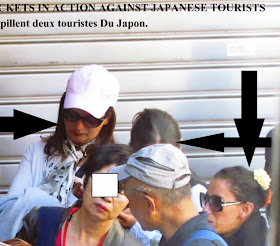
.JPG)




























+-+C%C3%B3pia.JPG)
.JPG)





























.JPG)














.JPG)
.JPG)
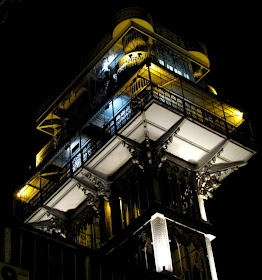
.JPG)

.JPG)






















































.JPG)




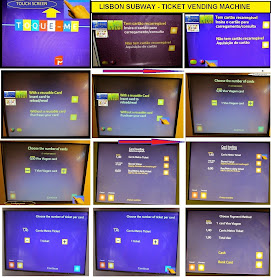





























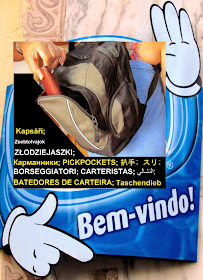















+-+2.jpg)




























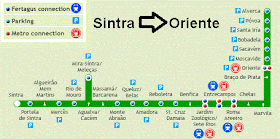




















.JPG)

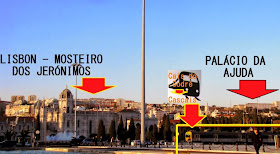


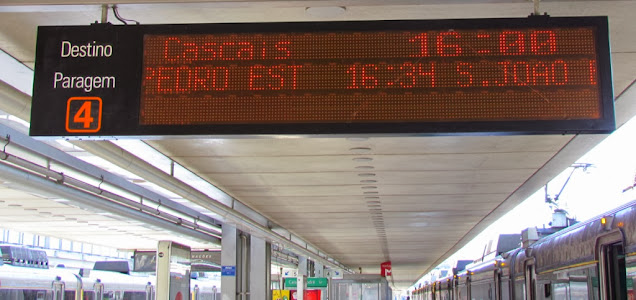
.JPG)


































